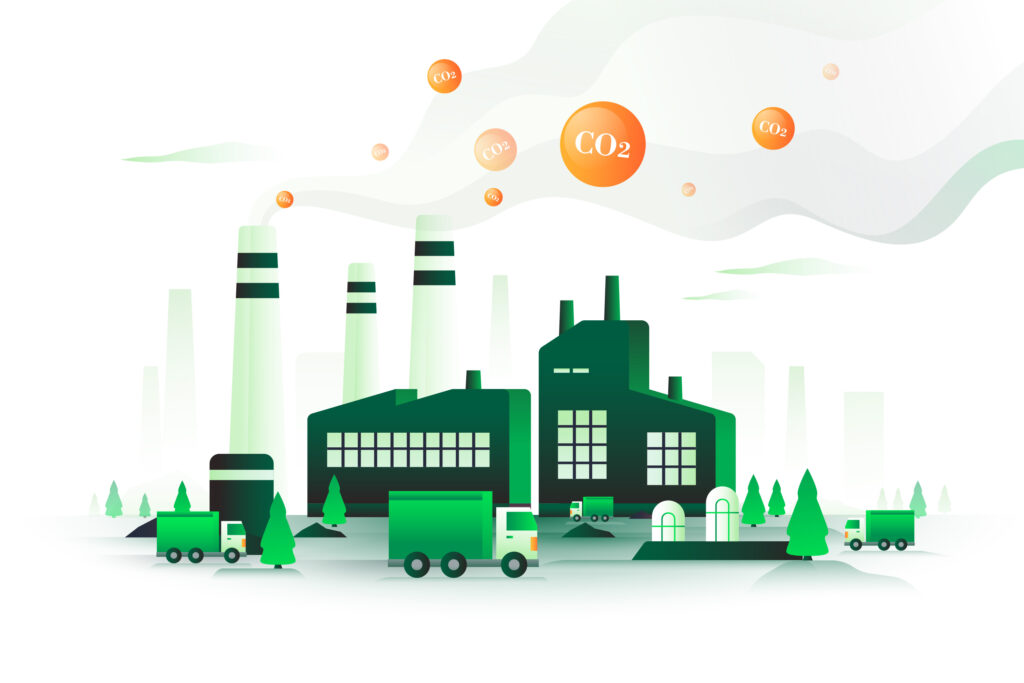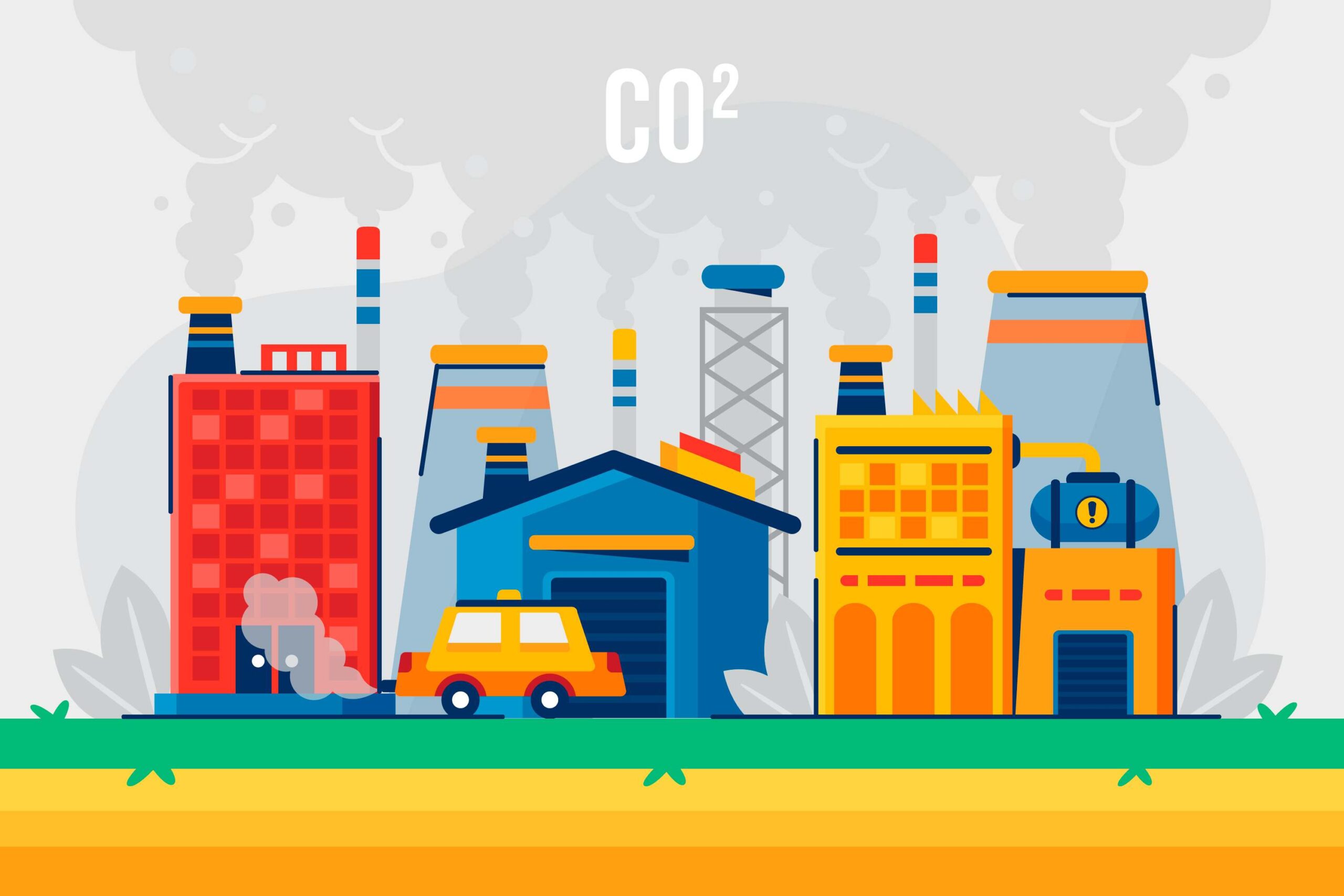At a Glance:
Carbon reduction is a transformation process by which reduction in carbon emissions occurs mainly in the energy and chemical industries, vast sources of greenhouse gases. The achievement of net-zero emissions would thus largely depend on innovations in technologies as well as changes in the regulatory policies to fuel energy sources. For the industry sector, it is about the innovation of manufacturing process efficiency, renewable energy, and improved carbon capture. Building decarbonization involves building energy efficiency and the use of renewable energy in the construction and maintenance of structures. The blog shows the strategies, challenges, and future prospects of Carbon reduction in these key sectors.
What Does Decarbonization in the Energy and Chemical Industries Look Like?
The energy and chemical industries are the fundamental drivers of the growth of the economies but account for about 75% of the greenhouse gas emissions. Decarbonizing these sectors involves moving from fossil fuels to cleaner alternative fuels. Therefore, integrating renewable energy, improving energy efficiency, and carbon capture and storage (CCS) technologies are among the most important strategies in this area.
Hence, carbon reduction is to be included in the overall energy needs and environmental protection. The highest impact of reducing carbon footprint is associated with the transition towards low-carbon energy with the innovation in chemical production, processes, or services.
Consequently, the process of industrial carbon elimination will mean reconsidering the mode in which industries consume and produce energy. In this respect, it encompasses the manufacturing, chemical, and construction industries. With agencies like EPA laying down strict guardrails, the chemical and energy sectors transitioning towards a greener future through multiple approaches.
The major areas for carbon reduction for these industries are listed below:
- Energy Transition: progressive replacement of energy sources by coal, oil, and gas through the use of solar, wind, and hydropower
- Energy Efficiency: systematic improvement of production processes and minimization of losses in the energy consumption chain
- Carbon Capture: technologies that capture CO2 emanating and store it, and they never again reach the atmosphere
- Circular Economy: reuse and recycling of materials to reduce resource consumption and its combustion.
Industrial Decarbonization: Strategies & Difficulties
With rising global awareness, companies are slowly shifting towards the reduction of carbon emissions by introducing new technologies and processes. Heavy industries such as chemicals, steel, and cement are among the main contributors to CO2 emissions, and thus, carbon reduction is an urgent process to be carried out to reduce emissions.
Proven Strategies to Fuel Industrial Decarbonization
- Electrification: Clean energy electrification of industrial processes and substitution of fossil fuel-based sources.
- Hydrogen Energy: It uses green hydrogen generated from renewable energy sources as a clean fuel for industrial processes.
- Carbon Capture and Utilization: Attempts to capture industrial plant carbon emissions and utilize these emissions in processes such as the production of synthetic fuels or chemicals.
- Bio-based materials: Fossil-based raw materials are replaced by a bio-based raw material substitute to decrease the carbon emissions from the production.
Blockers in the Way of Reduced Carbon Usage
- Steep Upfront Cost: Carbon reduction through clean technologies will be too expensive for several industries to shift away from.
- Technological Gaps: While significant progress has been achieved in terms of technological significance, still, certain sectors still lack commercially viable technologies to reach full carbon elimination.
- Policy and Regulation: Government-backed sustainability policies and regulations and incentives are of utmost importance in the regulation of the use of carbon reduction technologies, though they tend to be very different from one region to another.
Building Decarbonizing: Energy & Chemical Factories Made Sustainable
Buildings account for nearly 40% of carbon emissions around the world and are considered among the most important factors in the fight against climate change. Reducing the carbon footprint requires energy efficiency in buildings as well as renewable resources to be the future of heating, cooling, and electricity supply. As such, planning factories, offices, stores in an energy efficient way can help companies to cut down chemical footprint through building decarbonization.
Carbon Elimination Strategies:
- Energy-Efficient Design: This includes passive design strategies such as natural ventilation, daylighting, and insulation that can lead to huge reductions in energy use.
- Renewable Energy Integration: Installing photovoltaic systems, wind turbines or geothermal power generation equipment to supply power to a building through renewable energy sources.
- Smart Building Technologies: Fitted with smart thermostats, lighting systems, and software on energy management, which are utilized to maximize energy.
- Retrofit of Existing Buildings: Upgrading old buildings with energy efficient materials, windows, and HVAC systems, therefore reducing their consumption of energy.

Role of Technology in Carbon Reduction
The advanced energy and chemical technologies will be the leading ones in the carbon elimination. Clean energy technologies, carbon capture solutions, and green chemistry are what will determine whether net-zero emissions will soon become an attainable objective.
Clean Energy Technologies:
- Solar and Wind Power: These sources of renewable energy have started to fall in price as well as increase in efficiency such that their application in industrial or building construction will not depend on fossil fuel usage.
- Energy storage: Advances in battery technology have enabled energy storage from intermittent sources such as wind and solar energy, thereby alleviating the uncertainty of supply through renewable energy sources.
- Green Hydrogen: Renewable energy-based hydrogen can offer clean fuel to the same industries that are hard to electrify, including steel manufacturing and aviation.
Carbon Capture and Storage (CCS):
CCS technology captures carbon dioxide from industrial processes and stores it underground or uses it in other industrial applications. It is a technology important to those industries where emissions can not be reduced at the source.
Prospects for Decarbonization in Future
The future looks very promising for the carbon reduction of energy and chemical industries because it is driven by the combination of technological and regulatory pressure and market demand for sustainable solutions.
Key Trends Shaping the Future
- Increased use of renewable energy sources: As renewable energy becomes less expensive, its usage will increase even more among industrial processes and buildings.
- Carbon capture innovation is continuously being innovated and is supposed to make the process more efficient with time, although further likely to be beneficial in terms of cost for various industries to incur emissions reductions.
- Inclusion of circular economy initiatives: more companies embrace the principles of the circular economy, and thus reduce their wastes and emissions from material reuse and resource optimization.
There is tremendous potential for innovation and synergy associated with emerging technologies that will drive carbon reduction forward. Emerging technologies are changing the way energy and chemical companies work, moving processes toward being more efficient and more sustainable. Such an innovation is going to be CCUS, which captures carbon emissions at source, stores them underground, or repurposes them for useful products such as synthetic fuels or building materials. The technology cuts down the environmental impact of industrial processes and has already seen many forward-thinking companies across the globe embracing it.
Integrating renewable energy plays a very crucial role in decarbonizing operations. Chemical plants and industrial facilities are increasingly using solar, wind, and hydroelectric energy to obtain power instead of fossil fuels and have reduced their carbon footprint. In recent times, there has been progress with the production of green hydrogen: green hydrogen is emerging as a clean fuel that could generate dramatic cuts in sectors such as heavy industry and transportation, where electrification is quite hard.
These innovations will be complemented by AI and machine learning breakthroughs that shall make the most of energy and chemical processes so carbon elimination happens not only for the former but also for the latter.
Conclusion
The journey of the energies and chemicals sector toward decarbonization is difficult and full of promise. Indeed, amidst increasing regulatory demands, advancing technologies, and growing urgencies for sustainability, this is one of the key steps toward industrial and building carbon reduction. Companies that can respond to change, invest in innovative carbon elimination strategies, and embrace clean energy solutions will be shaping the low-carbon economy of the future.
Speciality chemicals and advanced materials will be the signals of such change as industries continue to reduce their carbon footprint, become optimized in the use of energy, and actually realize carbon reduction goals. As the carbon reduction landscape evolves, it will depend on stakeholder cooperation from across the industries that are working toward innovation and implementation of solutions that promise a sustainable, energy-efficient future.
Are you looking for customized solutions that can assist in your carbon reduction efforts? Elchemy has innovative speciality chemical products that’ll help you reach a more sustainable future. Engage with Elchemy and unlock the potential of innovative, eco-friendly solutions to take your business into a cleaner, greener tomorrow.



